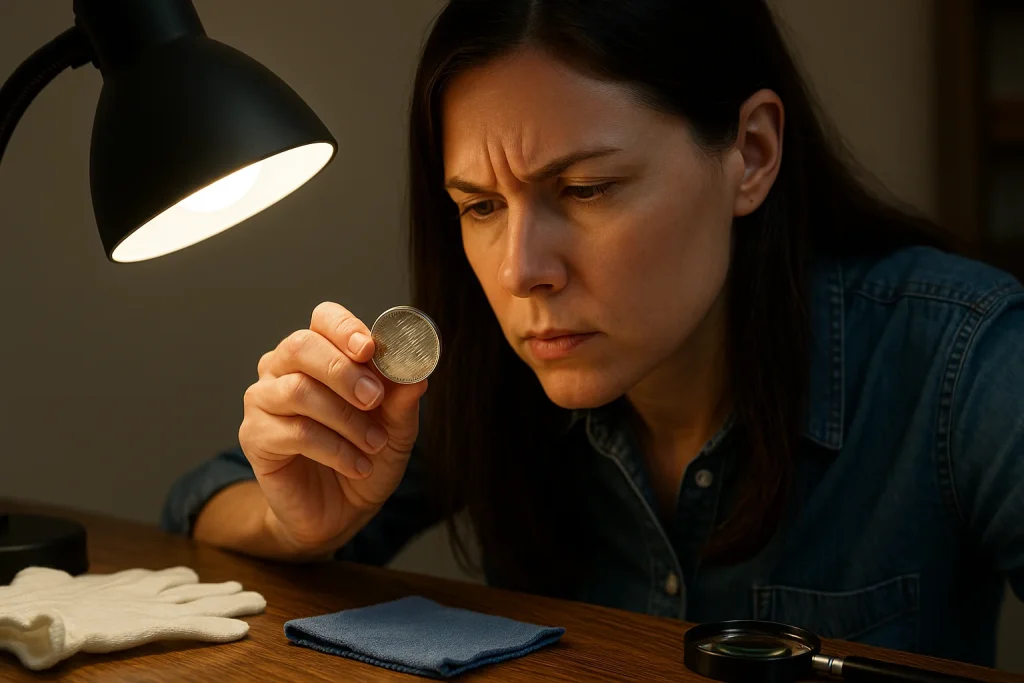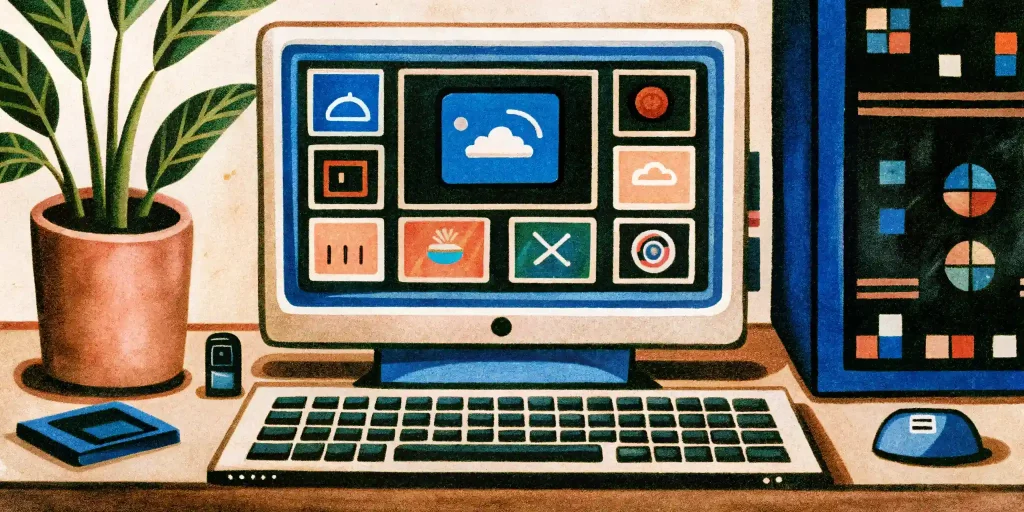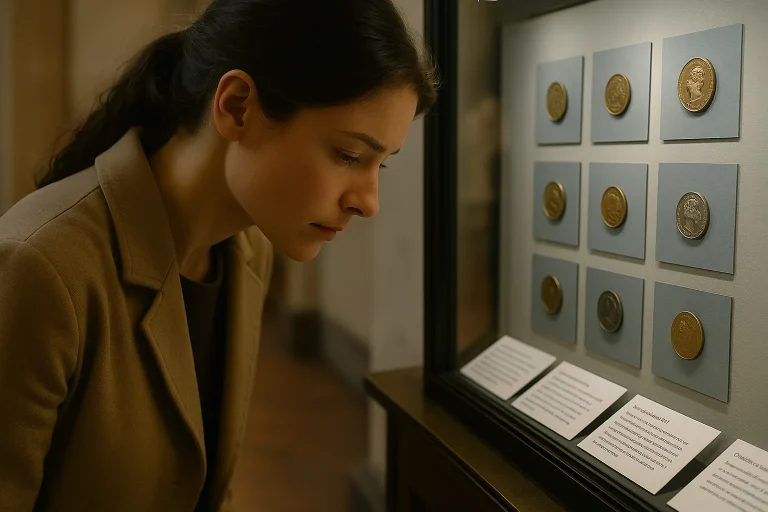A coin is more than just a means of payment. It has dozens of subtle nuances: microscratches, stamp lines, a faint impression, an imperceptible shift. Sometimes it is these “flaws” that make a copy truly valuable. Unusual minting errors long ago became a hunting trophy for collectors: they are rare, difficult to recognize, but can cost tens and hundreds of times more expensive than the face value. Evaluation of such coins is a delicate art, in which the key role is played not just the origin or year of issue, but also coin grades – the state of the coin, determining its numismatic fate.
In recent years, determining the value of coins is easier – technology expands the boundaries. You don’t need a microscope, you don’t need to buy catalogs: machine vision algorithms are able to catch what the eye will miss. When you always have a smartphone in your pocket, it is possible to combine the hunter’s intuition with the precision of an expert. And one day, a simple minting error can turn into real luck – in case the evaluation tool is at hand.
What Are Coin Errors and Why Are They Valuable?
Coin errors are imperfections that occur during the minting process. They can appear at any stage of production, from the preparation of the blank planchet to the final strike of the die. Despite being considered defects, coin errors are highly popular among collectors because of their rarity and the unique nature of each mistake. These errors make a coin more intriguing and valuable, as no two errors are ever identical, which adds an element of surprise and history to every piece.
There are three main types of minting errors:
- Planchet errors occur when the metal blank is defective or improperly prepared before being struck. Examples include incomplete or misshapen planchets.
- Die errors happen when the die used to stamp the coin is damaged or misaligned. Common examples include doubled dies.
- Strike errors happen during the actual striking process, often due to misalignment or overpressure, leading to misprints or incomplete strikes.
Understanding the difference between mintage error and post minting damage is very important. Minting errors occur during the production process, while post minting damage occurs after the coin is issued and in the hands of the public.
Most Valuable and Popular Coin Errors
Minting errors come in many forms, but some are more valuable and sought after due to their rarity and the difficulty in spotting them. Below are some of the most famous types.
| Error Type | Explanation | Example |
| Doubled Die Errors | Occur when the die is misaligned during the hubbing process, creating a doubled image on the coin. | 1955 Lincoln Cent Doubled Die Obverse – One of the most famous errors, with strong doubling on the date and inscriptions. |
| Off-Center Strike | Happens when the planchet is misaligned with the dies, causing part of the design to be missing. | 2000 Lincoln Cent Off-Center Strike (15%) – Off-center but retains the full date, increasing collector value. |
| Clipped Planchet | Occurs when the planchet is improperly cut, leaving a curved or straight portion missing. | 1963 Jefferson Nickel Clipped Planchet – Noticeable curved clip on the edge, authenticated and well-documented. |
| Broadstrike | Happens when the collar die fails to contain the coin, allowing it to spread outward. | 1982 Roosevelt Dime Broadstrike – Struck without a collar, resulting in an unusually wide and flat shape. |
| Wrong Planchet Errors | The coin is struck on a planchet intended for a different denomination or metal type. | 1943 Lincoln Cent on Bronze Planchet – Struck in bronze instead of zinc-coated steel, this error is extremely rare and valuable. |
| Die Cracks and Cuds | Die cracks are caused by fractures in the die; cuds occur when parts of the die break off, leaving raised blobs or blank areas. | 2005 Kansas Quarter with Die Break (Extra Leaf) – A popular cud error where an extra leaf appears on the corn stalk. |
These types of mint errors are prized both for their rarity and the unintentional craftsmanship behind them. Unlike post-mint damage, these flaws originate directly from the minting process, often under unexpected or rushed conditions. They serve as a snapshot of the human and mechanical imperfections in coin production. Collectors are drawn to these mistakes because they blend history, variety, and scarcity into something tangible and often surprisingly valuable.
How to Distinguish a True Mint Error from Wear or Damage
Identifying a true minting error versus wear or damage requires a keen eye and a basic understanding of how coins are made. Here are some tips on distinguishing a genuine error from a regular defect or worn-out coin:
- Wear and tear vs. error: Wear occurs naturally as a coin circulates, leading to a loss of details over time. A coin that looks worn out from use typically shows even wear and lack of detail across the surface.
- Symmetry and кegularity: Mint errors usually show an irregularity in shape, spacing, or design features, while post-mint damage tends to be more symmetrical or uniform. A mint error may have a slight shift in design elements, but the overall image will still retain some symmetry.
- Examination under magnification: Use a magnifying glass to closely inspect the coin, as errors such as doubled dies or off-center strikes often become more visible with these tools.
- Comparing examples: One of the easiest ways to verify a mint error is to compare your coin with similar examples. Resources like online databases or printed guides often provide high-quality images for reference.
Understanding the subtle difference between a true mint error and common damage can be challenging even for experienced collectors. Minor irregularities might mimic serious minting flaws, while authentic errors sometimes appear deceptively simple. Fortunately, there is a smarter, easier path: modern technology now allows collectors to analyze coins more accurately and confidently. With the right tools, it is possible to streamline the process of verification and avoid the doubts that often come with visual inspection alone.
Smart Tools for Collecting: How Coin ID Scanner Brings Expertise
In the past, identifying and evaluating coins relied heavily on expert knowledge or expensive appraisals. Today, modern technology makes this expertise available to everyone – and Coin ID Scanner is leading the way.
Here is what the app can recognize in seconds:
- Denomination – from pennies to gold coins
- Year and mint mark – essential for identifying varieties
- Coin grade – an estimate of the coin’s condition
- Mint errors – including die cracks, doubled dies, off-center strikes, and more
- Estimated value – based on real market data
Its strength lies in accessibility. Whether you are a beginner browsing through inherited change or a seasoned numismatist chasing specific varieties, the app brings professional-level analysis in a few clicks. What once required expert opinion is now achievable from your smartphone in seconds. It transforms every coin hunt – from flea markets to attic boxes – into an informed search backed by real-time data and reliable grading insights.
Found Something Unusual? Here Is How to Handle and Analyze It with the App
Spotting a coin that looks odd or possibly with rare minting error can be thrilling – but taking the right steps next is key to preserving its potential value. Here is how to act wisely and use technology to your advantage:
- Don’t clean the coin. Any cleaning can scratch the surface or erase valuable minting details.
- Install the Coin ID Scanner app to get quick and reliable results of identification and checks.
- Take a clear photo – or better yet, open Coin ID Scanner and snap the image directly in-app.
- Upload or scan the coin. The app includes an extensive database to help you confirm what you’ve found.
- Review the results. You will see a grade estimate, rarity level, and approximate value based on real data.
- Compare it with rare error types. The app includes a visual database of known errors to help you confirm what you’ve found.
- Save the analysis. You can catalog your coin within the app for future tracking or expert follow-up. What is more, you can also refer to the apps blog to receive insights, ideas and tips for the collecting process.
This process helps avoid unnecessary expert fees and gives you confidence from the start. If your coin turns out to be rare or valuable, you will be ready for next steps – be it preservation or sale – with clarity and peace of mind.
Value Is in the Details
The world of numismatics begins with observation and is conquered by those who possess precise tools. So today it is not necessary to have rare knowledge – all you need is interest, a little practice and a reliable assistant in your pocket.

















